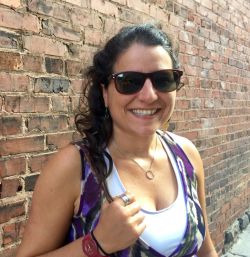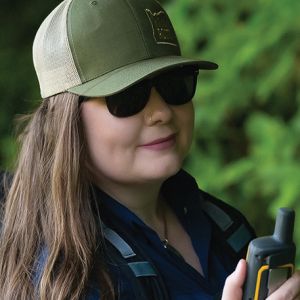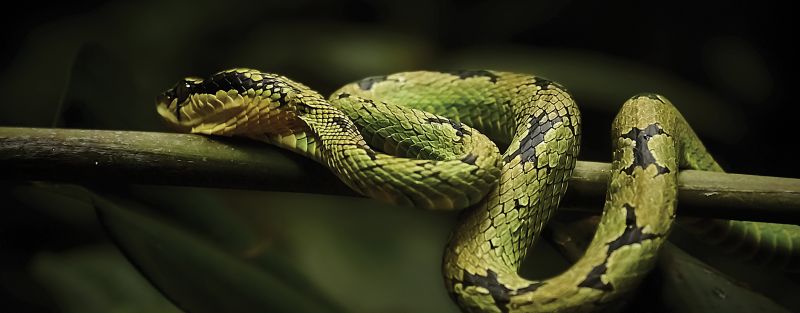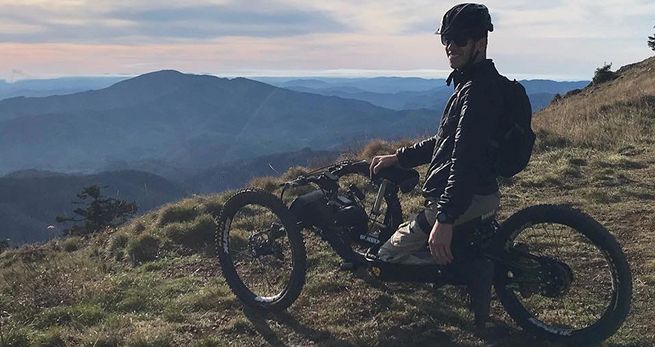
Position at Oregon State University: Assistant Professor of Integrated Human and Ecological Systems (FES)
Tell us a little bit about where you are from…
Well, that’s a bit of a complicated question. You ready? I’m a Canadian citizen and I tend to call Montreal “home” because that’s where most of my family still lives. But we immigrated to Canada from the United Arab Emirates, where I was born and spent the first 10 years of my life, but I’m not a U.A.E citizen. I was (and I guess, technically still am) a Lebanese citizen, even though I’ve never been to Lebanon, and don’t consider myself “from” there. Really though, we’re Palestinian – my parents fled Palestine as refugees in 1948 and unfortunately have not been back since, so I have no official Palestinian papers – just part of the large diaspora.. And now I’m a permanent resident in the U.S. So I guess you could say I’m a twice first gen immigrant (first to Canada, now to the U.S.) daughter of Palestinian refugees. [If you think that’s complicated, you should hear my parents’ stories!]. When I’m trying to keep it simple, I say I’m Palestinian-Canadian, and I’m going to Montreal for the holidays.
What brought you to OSU? What is your role in the College of Forestry?
I came because I was offered a great job in FES as an Assistant Professor, and Oregon seemed like a great place to live! Although I did much of my schooling and training in the east and Midwest (Montreal, New York, Michigan), I did my PhD at UBC, and after 8+ years in Vancouver I was sold on West Coast living and mild winters, so I was pretty excited to land in Oregon.
What’s your favorite part about working for the College of Forestry?
This is a tough one. I like the general atmosphere of the college – producing excellent work but also somehow relaxed and easy going (most of the time). But I think one of the most enjoyable parts of my job has been mentoring grad students. We attract some really great grad students here. I have been incredibly fortunate so far in working with fantastic grad students who are not only great scholars but also inspiring human beings. They really keep me going.
What’s a cool work-related project you are working on right now?
Gosh, all the projects are really cool, it’s hard to choose! I lead a research group called FoLIAGe (Forests, Livelihoods, Institutions and Governance), and we tackle a lot of difficult questions on how to balance conservation and development with innovative governance mechanisms, in the U.S. and in several tropical countries. A really cool project that I’m super excited about right now is one that we’ve been trying to get funded for several years, and finally got funded by NSF this year. It’s a large-scale analysis of the effects of community forestry on forests and livelihoods in Cambodia, Laos, and Vietnam. Given the unprecedented scale of the analysis, we’ll get to test some key hypotheses that have previously mostly been examined with case studies. It’s a large collaboration with several others across OSU and partners in the Mekong. It’s just so exciting that we’re finally going to get to do it! Now to carve out adequate time to actually work on it…

What do you like to do outside of work?
I’m now a typical West Coaster outside of work. My wife Julie and I spend lots of time in the woods – hiking, running, mountain biking. I also love to cook and get obsessed with good kitchen knives. And I read a fair amount – switching off between fiction and non-fiction. One of my favourite things in life is lounging on a warm beach with a good book. If we lived near a warmer coast, I’d be there very often, swimming, diving, and lounging. In a past life, my favourite things included wandering around big cities taking photographs and sampling street foods and cafes.
What’s your favorite food?
It’s a dish called kibbeh, made to perfection by my mother and replicated poorly by me. Every time I visit my parents in Montreal I come back with half my luggage full of kibbeh from my mum and manakeesh from a local Lebanese bakery (I have to go all the way to San Francisco to find a good Lebanese bakery on this side of the continent – and it’s aptly called “Reem’s”). I don’t identify as Lebanese at all (despite the expired passport), except for when it comes to the food – they really know what they’re doing with their cuisine, and that part of our culture I’m happy to say is influenced by them.
What’s your favorite time of the year? Why?
When I was living in the east – the Fall. The crispness of the air, the array of oranges and reds that are Fall foliage. Unbeatable. But now on the west coast Fall is not so grand and a little too wet. So I’d say Summer. Yes, it gets pretty hot and dry, but it’s in my blood to like the heat – I was born in the desert! But mostly I like summer activities and the slower rhythm of things when work revolves around hikes rather than the other way around.

Do you have any children or pets?
We got our puppy Miko at the start of the COVID shutdowns – fantastic decision! She’s the sweetest pups ever and has really gotten us through some tough times with her cuteness. Now we’re slowly getting her used to staying home alone while both moms are at the office. Poor baby. She’s been known to howl when we leave.
If you could have one superpower, what would it be? Why?
I wish I were a morning person. I think morning people have a superpower (it’s not natural!). It seems like it would be so lovely to enjoy being awake at dawn and getting more stuff done before the day starts.









